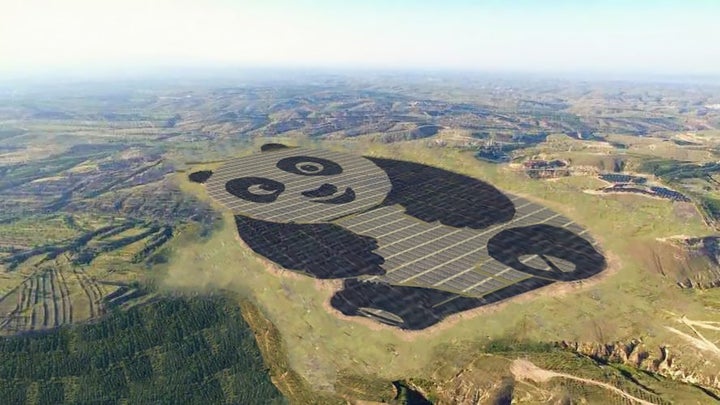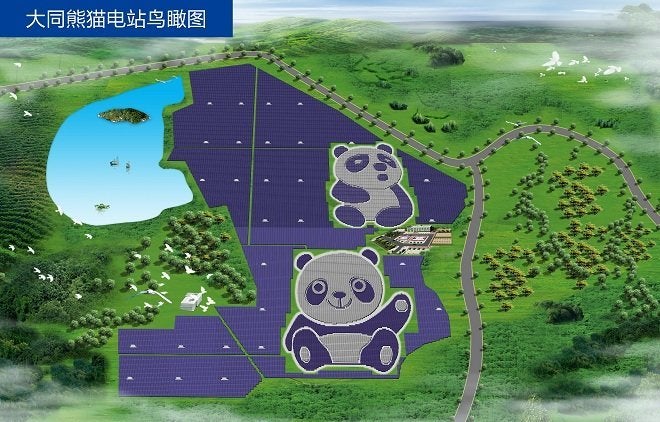If governments are worried that there isn’t enough public enthusiasm for investment in renewable energy, then may we suggest turning solar plants into cute furry animals?
This is after China built the world’s first panda solar plant, 248 acres of solar panels laid out like a giant bear. It is, we think you’ll agree, amazing.

Normally shaped as in square-shaped grids with rows of panels lined up next to each other, this innovative design uses monocrystalline silicone for the black parts and thin film solar cells for the white parts.
The imaginatively named ‘Panda Power Plant’ was built by China Merchants New Energy Group, one of the nation’s largest clean energy providers, in northwest Datong province.
Officially connected to the main grid on 30 June, the 50-megawatt plant has already begun delivering power to some of China’s 1,360.7 million people.
When the second phase of the 100-megawatt plant is completed later this year, it will be able to produce 3.2 billion kilowatt-hours of solar energy in 25 years, according to the company.
That will eliminate approximately one million tons of coal that would have been used to produce electricity, reducing carbon emissions by 2.74 million tons.

China Merchants New Energy Group worked with the United Nations Development Program (UNDP) to make the plant a reality, and is part of a larger effort to raise awareness among young people about clean energy.
The UNDP said in a statement: “As the future of development, the youth have the opportunity to contribute to worldwide sustainable development.”
The site also has a youth activity centre to teach schoolchildren about the benefits of solar energy, and candidates around the country will be recruited to participate in summer camps.
According to PV magazine, the installation was valued at roughly 369 million Yuan ($54.4 million) on the Hong Kong Stock Exchange.
On 3 September 2016, China ratified the Paris Agreement, and, according to a report by Climate Action Tracker, has sufficient policies in place to reach these goals.
They are currently focused on a commitment to peak COemissions by 2030 at the latest, and lower the carbon intensity of GDP by 60%–65% below 2005 levels by 2030. As well as increasing the share of non-fossil energy carriers of the total primary energy supply to around 20% by that time.
